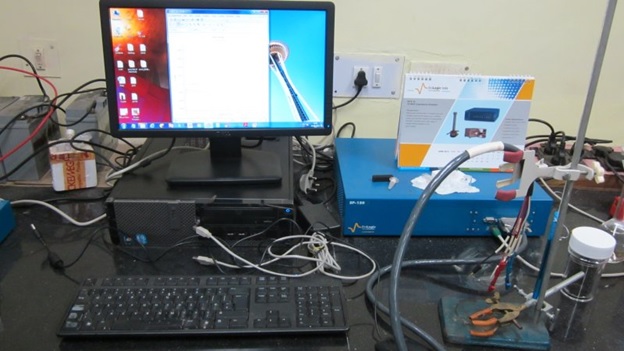Welcome, Monday , May , 13 , 2024 | 04:28 IST
Welcome, Monday , May , 13 , 2024 | 04:28 IST


Features
Current Range: 10 µA to 1 A
Description:
SP-150 Make Potentiostat/ Galvanostat is used for carrying out cyclic voltammetry of the developed molecule wherefrom the redox state of the molecule can be ascertained. In addition to it electrochemical impedance spectroscopy, potentiodynamic polarization, rest potential check can also be performed by this sophisticated analytical instrumentation.
Cyclic voltammetry: Cyclic voltammetry involves sweeping of the potential in a positive direction until a predetermined value of current or potential is reached, then the scan is immediately reversed towards more negative values until the original value of potential is reverted.
Electrochemical impedance spectroscopy: Electrochemical impedance spectroscopy (EIS) is used to study a wide variety of systems in many fields of electrochemistry including corrosion inhibition study. The system under test is generally perturbed by a sine wave current or potential of small amplitude. Measurements as a function of frequency of the perturbation give an impedance (or admittance) diagram. Explanations of impedance diagram are made in terms of electrical equivalent circuits or in terms of Faradic impedance which depends on the electrode reactions. Generally, corrosion study is performed in our Laboratory by employing this technique.
Potentiodynamic Polarization: Potentiodynamic polarization is often used for laboratory corrosion testing. This technique can provide significant useful information regarding the corrosion mechanism, corrosion rate and susceptibility of specific materials to corrosion in designated environments. Polarization methods involve changing the potential of the working electrode and monitoring the current which is produced as a function of time or potential.